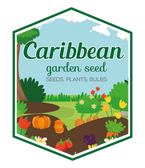
Raspberries boyne, Fruit ,(live plant) Perennial
FAST & FREE SHIPPING
Over 90% of our orders are processed and ship out by next business day.
We are currently processing and shipping most orders within 1-3 business days. (backorders not included) Due to high demand during the peak months of January to May, orders may require additional time for packaging /shipment.
Free shipping for orders over $54.95. Excludes live plants, fresh products And Stackable Black Plastic Nursery Crate
Shipping and handling charges will cover outbound freight and packaging materials. Fees are applicable to all orders, based on total order value pre-tax. Expedited services can be selected at Checkout with extra fees.
- Free shipping to lower 48 states on orders $54.95+
- (Most Items), excluding live plants, plant bulbs, and black plastic nursery crate.
- Safe Seed Pledge
- Satisfaction Guaranteed
- Select your desired size and/or color from the available options.
Grow Your Own Fresh Fruit! - A Heavy Producer Year after Year!.The Raspberry, Rubus ‘Boyne’ is THE summer producing red raspberry for extreme arctic climates! Released in 1960, ‘Boyne’ is an early-season variety that is extremely winter hardy. Fruits are medium size and tremendously flavorful when they open in the middle of July. ‘Boyne’, is an attractive berry with a deliciously sweet, aromatic flavor, making it an excellent choice for fresh eating, canning, freezing, and desserts. Sturdy uprights canes will not need trellising to support the abundant fruit production. It consistently produces deep-red, medium-sized berries. It will grow where other varieties experience winter injury damage to the canes. Grows successfully in Zones 3-6. Fruit are borne on dwarf canes that are easy to pick. ‘Boyne’ is an excellent plant maker and may bear a week or ten days before ‘Latham’. Heavy cropper.
Plant as soon as soil may be worked in the spring. Your plants require 1″ of water per week during the growing season and regular, shallow cultivation. The bush will bear only on one-year-old stems. As soon as canes have produced fruit, prune them back to the ground to make room for the strong new canes. Additional pruning will be required to eliminate tangling and improve their ability to bear.
Fertilize the raspberry plants the following spring when they begin to grow again. Apply a 10-10-10 fertilizer per label instructions. Continue to keep the soil moist. Harvest the raspberries when they ripen in the summer.
Tips & Warnings
It is a good idea to hammer in a trellis behind the raspberry plants to give them something to grow on. If you do not have access to a trellis, transplant the raspberry plants in front of a fence that they can climb on as they grow.
A layer of mulch spread around the raspberry plants will help with water retention and reduce weed growth. A 3- to 4-inch layer of sawdust, bark chips or pine needles should suffice.
Do not over water the raspberry plants. Standing water can cause the roots to rot, eventually killing the raspberry plants. If the soil feels moist at a 1- inch depth, do not add more water. Instead, check the soil for moisture again in a few days.
Materials: adding them to other foods such as yogurt,or cereal,perennial ground cover plant,Orange,Fruit Ripens,Cream,Raspberry,Raspberries Seeds,RED Rubus Idaeus Bush Fruit
HOW TO GROW GUIDE
LET OUR CUSTOMER SPEAK FOR US

![[Seeds] - Caribbeangardenseed](http://caribbeangardenseed.com/cdn/shop/files/gift-card-gift-card-1_1024x1024_dfa857db-9150-4315-a362-7f0bb3fb9c47_60x28.png?v=1722895789)





